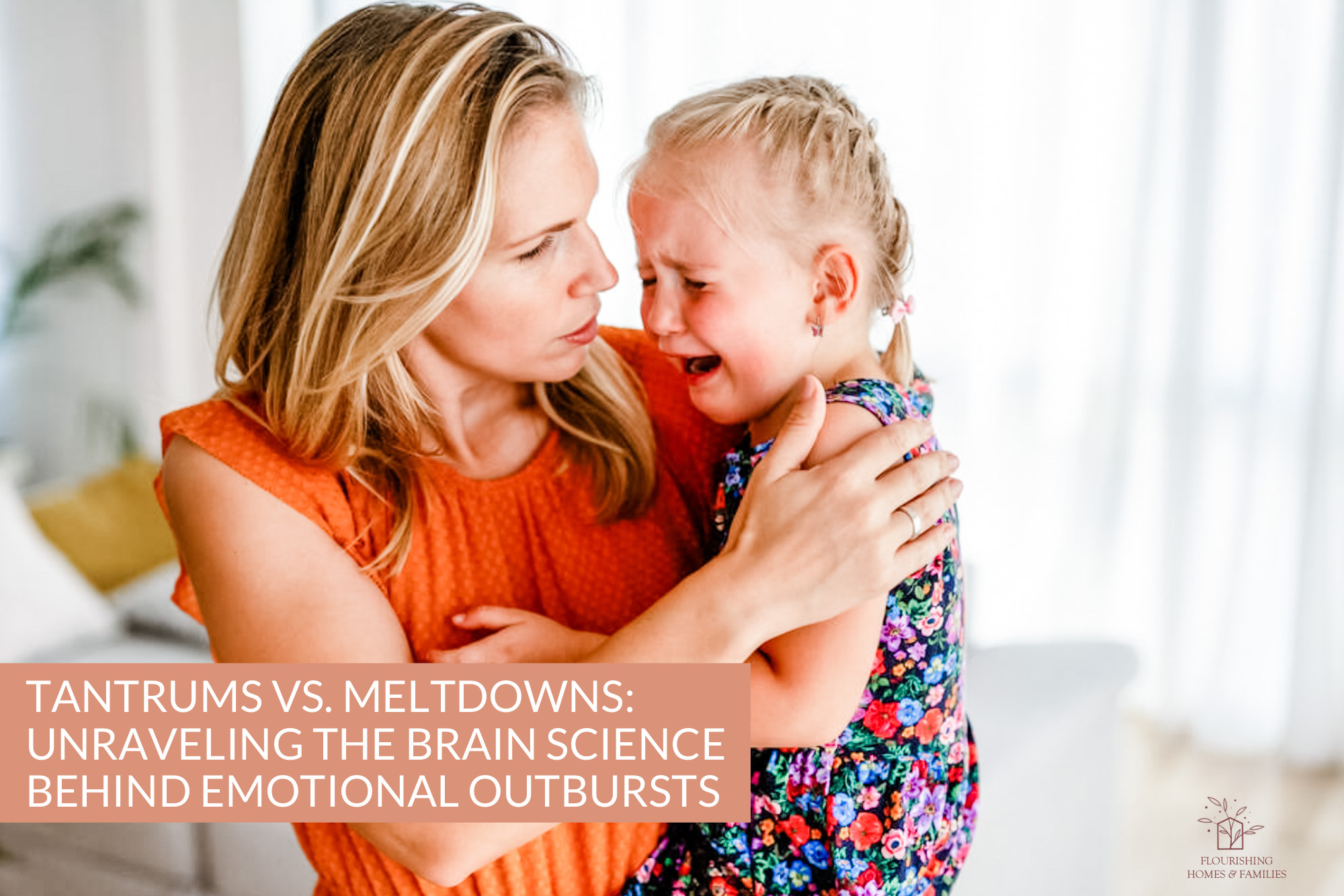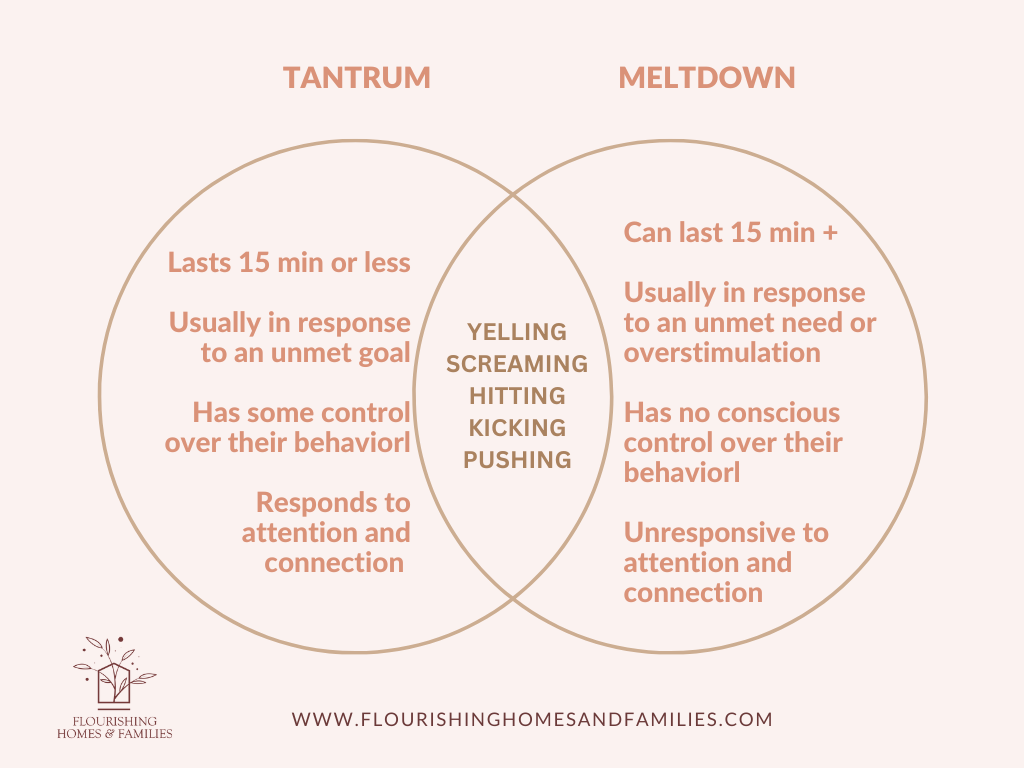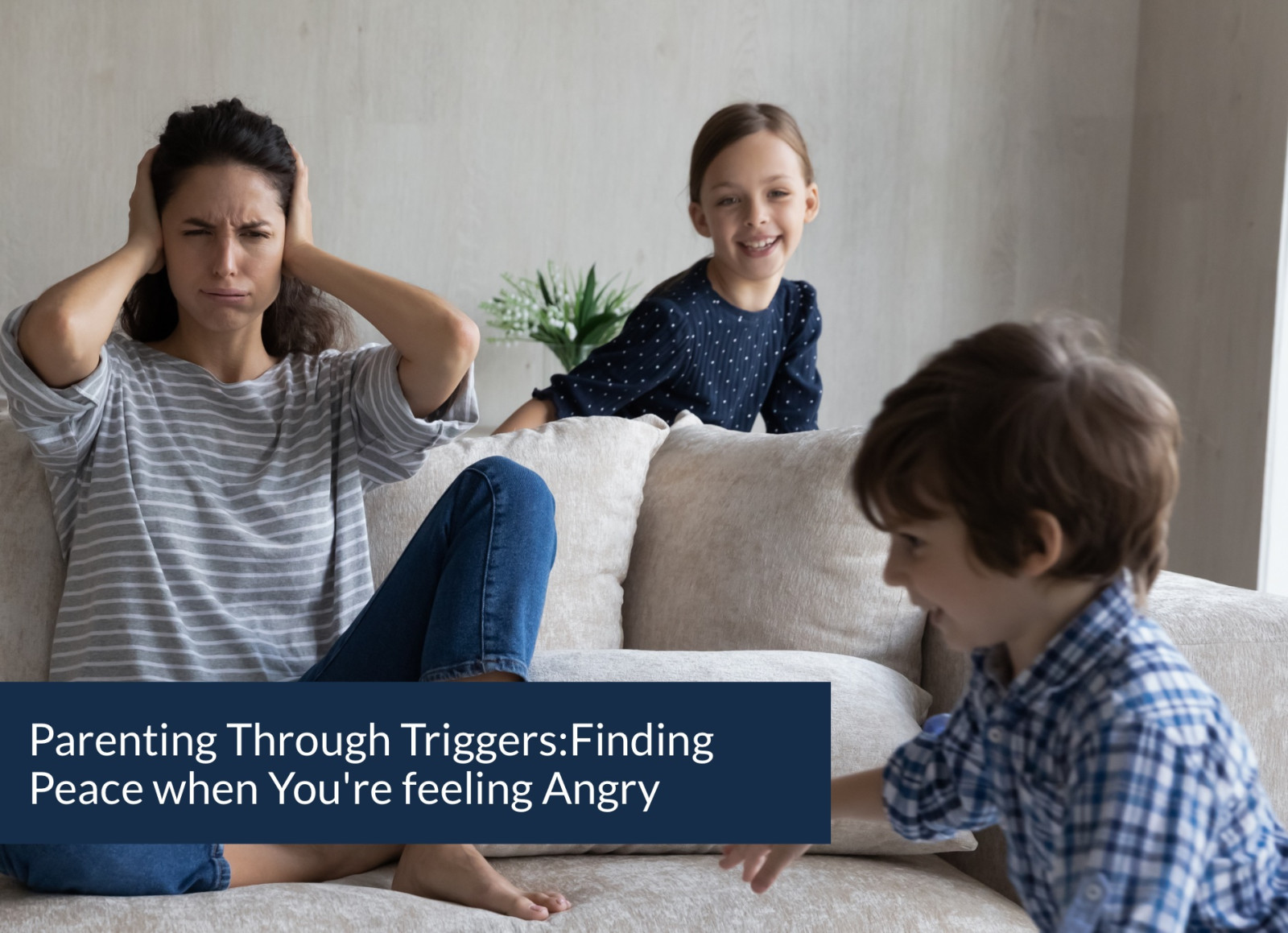
Parenting is an incredible journey filled with ups and downs, and one of the challenges many parents face is understanding the difference between a tantrum and a meltdown. While these terms are often used interchangeably, it is crucial to recognize that tantrums and meltdowns arise from distinct emotional processes within the brain. In this blog post, we will explore the brain science behind these two phenomena, shedding light on their differences and providing insights to help parents respond effectively.
Understanding Tantrums
Tantrums are commonly observed in young children and are often triggered by frustration, fatigue, hunger, or a desire for autonomy. From a neurological perspective, tantrums involve the brain's prefrontal cortex, which is responsible for reasoning, impulse control, and emotional regulation. During a tantrum, this part of the brain becomes overwhelmed, impairing the child's ability to manage their emotions effectively. As a result, children may exhibit behaviors such as screaming, crying, hitting, or kicking as a way to express their distress.
Understanding Meltdowns:
Meltdowns, on the other hand, occur in individuals across various ages, including children and adults, and are commonly associated with conditions like autism spectrum disorder or sensory processing difficulties. Unlike tantrums, which are typically triggered by external factors, meltdowns are often a response to sensory overload or emotional overwhelm. During a meltdown, the brain's amygdala, which is responsible for processing emotions, becomes overstimulated, leading to a fight-or-flight response. This heightened state of arousal can manifest in intense emotional and behavioral outbursts, including crying, screaming, hitting, kicking, or withdrawal.
Differentiating Tantrums from Meltdowns:
- Triggers: Tantrums are usually triggered by unmet goals, specific events or frustrations, such as not getting a desired toy or being told "no." Meltdowns, on the other hand, are often triggered by unmet sensory or physical needs, sensory overload, emotional overload, or a combination of both.
- Emotional Control: During a tantrum, children may still have some level of emotional control, even if it is limited. They may pause their outburst when distracted or when their needs are met. In contrast, individuals experiencing a meltdown struggle to regain emotional control, as the heightened state of arousal overwhelms their ability to self-regulate.
- Duration: Tantrums are generally shorter in duration and can subside relatively quickly once the child's needs are met or when the frustration is resolved. Meltdowns tend to last longer and may take a significant amount of time for the individual to recover from the emotional and sensory overload.

Supporting Children during Tantrums and Meltdowns:
- Emotional Regulation: For tantrums, it is crucial to provide a calm and supportive environment, offering comfort and understanding to help children regulate their emotions. Even when holding boundaries, giving empathy and being a calm presence can help your child learn to process disappointment and frustration. Depending on what initiated the tantrum, redirecting their attention, offering choices, or engaging in soothing activities can be effective strategies.
- Sensory Support: During meltdowns, creating a sensory-friendly environment can help reduce the overwhelming stimuli. Providing a quiet space, offering comfort items like weighted blankets or headphones, and using calming sensory tools can assist in managing sensory overload. Other children may need sensory-friendly environments that allow them space to move their bodies. A Throw basket, mini trampoline, or heavy work ideas can help support their big body needs.
- Empathy and Connection: Regardless of whether it's a tantrum or a meltdown, offering empathy, and connection is essential. Validating the child's emotions, actively listening, and providing reassurance can help them feel understood and supported.
Understanding the distinction between tantrums and meltdowns empowers parents to respond with empathy and effectiveness. By recognizing the brain science behind these emotional outbursts, parents can adapt their approach and provide the necessary support to help their children regulate their emotions and navigate challenging situations.
Want to learn more about parenting toddlers with peace and purpose? Our upcoming workshop, Peacemaker Parenting: Toddlers is for you. You can sign up to be notified when registration opens here.

In 2016 a study released by child development and family science experts from The University of Texas at Austin revealed that spanking is closely associated with anti-social, aggressive behavior, depression and anxiety, and an increased risk of thirteen detrimental outcomes. News articles linked on social media are rife with emotionally-driven debate.
How should Christian parents respond to studies that say spanking is harmful?
FIRST, LET’S TALK ABOUT HOW THEY SHOULD NOT RESPOND.
1. Christian parents should not dismiss the evidence on account of their own emotional comfort. Facing articles and reports that feel condemning of your own childhood or your own parenting is emotionally difficult. We must keep in mind that ignoring scientific evidence because it makes us uncomfortable is merely willful ignorance. It is neither intellectually honest nor God-honoring.
2. Christian parents must not perpetuate easily dispelled myths about not spanking. This is, at its core, bearing false witness, which God’s people are commanded not to do. Some myths that are easily refuted:
Myth: Young adults today are so disrespectful because they weren’t spanked/Prisons are filled with adults who weren’t spanked as children.
Fact: In 1999 A study revealed that 94% of parents had utilized spanking by the time their child was preschool age. In 2011 a study corroborated these findings stating that 50% of children had been spanked by the time they were twenty months old. Further, college students who were spanked as children are more likely to engage in illegal behavior.
Myth: Countries that have banned spanking have higher crime rates.
Crimes rates, gun ownership rates, and prison populations have all fallen in countries that have banned spanking, and at a sharper rate than in places without such laws.
Myth: The studies are all flawed and do not differentiate between spanking and abuse. Fact: While there are limitations to any meta-analysis, most recent studies do make a clear distinction between “appropriate” spanking (occurring as rarely as twice a month), and abusive physical punishment that leaves bruises.
3. Christian parents must not claim that because they turned out fine all children who were/are spanked will turn out fine. 17 million children in the United States have been diagnosed with a mental disorder (ADHD, depression, anxiety, and/or behavior problems). The association between spanking and mental/behavior issues is more solid than the association between secondhand smoke and lung cancer. We cannot project our own outcomes on those of the upcoming generation.
SO HOW SHOULD CHRISTIAN PARENTS RESPOND TO THESE STUDIES?
1. We must remember that God is the Creator of science. He not only created the brain, but He also created us with the ability to learn and evaluate evidence. Advancement in science (especially neurobiology) is a gift from our Creator to help us understand His creation.
2. We must admit that spanking is a cultural tradition, not a Biblical mandate. Nowhere in Scripture are parents commanded to spank their children. (We suggest that even the handful of verses in Proverbs are not speaking of using a rod on children but on young adults.) Modern-day spanking is merely a tradition of men that has been taught by leading Christian parenting gurus for less than 100 years.
3. We must recognize that spanking and discipline are not synonymous. While the evidence is clear that spanking has negative long-term outcomes, we cannot throw out all discipline. Children need teaching, guiding, rebuking, correcting, and discipline. They need the opportunity to experience consequences, and to make things right when it is within their power to do so. The root of discipline is disciple. We must be diligent to disciple our children and not fall into permissive (often equally detrimental) parenting.
4. We must look for alternative ways to discipline (disciple) our children that align with Scripture. This can be tricky, and even frustrating when spanking is all we know. Thankfully there are many Scripturally-sound resources out there! We recommend:
Resources:
- Spanking and Child Outcomes: Old Controversies and New Meta-Analyses
- Does Outlawing Spanking Lower the Crime Rate Years Later?
- College students more likely to be lawbreakers if spanked as children
- Spanking children: Why does it happen and how does it affect development?
- Corporal Punishment by American Parents: National Data on Prevalence, Chronicity, Severity, and Duration, in Relation to Child and Family Characteristics
- Data and Statistics on Children’s Mental Health












